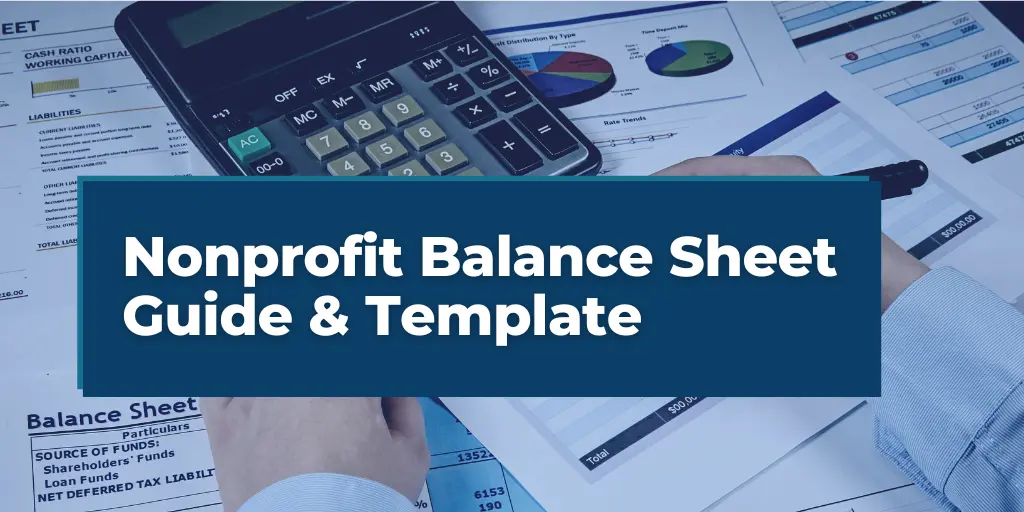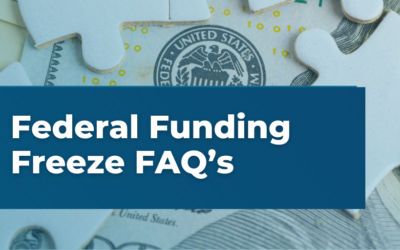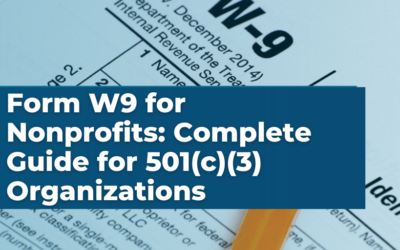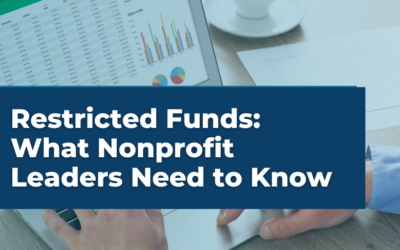What is a Nonprofit Balance Sheet?
The Nonprofit Balance Sheet or Statement of Financial Position reflects the financial stability of the organization. It allows stakeholders, including donors, grantors, board members, and management, to assess the organization’s financial health and sustainability. Regularly reviewing and understanding the balance sheet is essential for effective financial management in the nonprofit sector.
Why is the Nonprofit Balance Sheet important?
- Financial Health Snapshot
The balance sheet provides a concise snapshot of the organization’s financial health at a specific moment in time, showcasing assets, liabilities, and net assets. This allows stakeholders to quickly assess the financial strength and sustainability of the nonprofit. - Resource Management & Risk Management
By presenting a detailed view of the assets (from cash to tangible assets like property), the balance sheet aids nonprofits in making informed decisions about resource allocation, ensuring that they are used efficiently and effectively toward fulfilling their mission. - Liabilities & Risk Management Overview
It’s crucial for nonprofits to manage their debts and obligations responsibly. The balance sheet provides clear insights into current and long-term liabilities, allowing organizations to strategize repayments or renegotiate terms if necessary. - Donor Confidence & Stakeholder Transparency
Donors and grantors want to ensure their contributions are being used wisely. A well-maintained balance sheet indicates financial responsibility, which can boost confidence and potentially lead to increased future funding. - Regulatory and Compliance Necessities
Is there In many jurisdictions, nonprofits are required to maintain updated balance sheets and may need to submit them to regulatory agencies to retain their tax-exempt status or qualify for specific grants. - Enhanced Decision-Making
With insights from the nonprofit balance sheet, nonprofit leaders can make better-informed decisions, be it for budgeting, investments, or launching new programs. They can assess whether they have the necessary funds or if there are too many liabilities to take on additional projects
What is Included in the Nonprofit Balance Sheet?
Assets
These are resources that the nonprofit owns or controls, which are expected to provide future economic benefits. There are two categories of assets, Current and Non-Current.
Current Assets: Assets that are expected to be used up or converted into cash within a year or the organization’s operating cycle, whichever is longer.
- Cash and Cash Equivalents: Includes cash on hand, in banks, and short-term investments with an original maturity of three months or less.
- Accounts Receivable: Amounts owed to the nonprofit, which could be from pledges, grants, or other sources.
- Inventory: If the nonprofit has items for sale or distribution.
- Prepaid Expenses: Payments made in advance for goods or services to be received in the future.
Non-Current Assets: Assets that have a longer-term use or benefit for the organization.
- Investments: Stocks, bonds, or other long-term investments.
- Property, Plant, and Equipment (PP&E): Land, buildings, equipment, and vehicles owned by the nonprofit, often reported net of accumulated depreciation.
- Intangible Assets: Non-physical assets like copyrights, trademarks, or patents, if any.
- Other Long-Term Assets: Could include long-term receivables, deposits, or other similar items.
Liabilities
These represent the nonprofit’s obligations – amounts it owes to others.
Current Liabilities: Obligations due within a year or the organization’s operating cycle.
- Accounts Payable: Amounts owed to suppliers for goods or services purchased.
- Accrued Liabilities: Expenses that have been incurred but not yet paid, like salaries or taxes.
- Deferred Revenue: Funds received in advance for services to be delivered or obligations to be met in the future.
- Short-Term Loans or Notes Payable: Any borrowing due to be repaid within a year.
Non-Current Liabilities: Obligations that are due beyond a year.
- Long-Term Loans or Notes Payable: Borrowings or debts due after one year.
- Other Long-Term Liabilities: Could include items like deferred tax liabilities or long-term lease obligations.
Net Assets
The difference between assets and liabilities, essentially the equity of the nonprofit. Unlike for-profits, nonprofits don’t have owners, so instead of “equity,” they have “net assets.” For this reason, the nonprofit balance sheet is often referred to as the Statement of Financial Position.
- Unrestricted Net Assets: Funds that are not restricted to a specific purpose by donors and can be used at the organization’s discretion.
- Temporarily Restricted Net Assets: Funds that are earmarked by donors for a particular purpose or time period. Once the purpose is fulfilled or the time restriction lapses, these typically get reclassified to unrestricted net assets.
- Permanently Restricted Net Assets: Funds where the principal amount is required to be maintained indefinitely, often seen with endowments. Only the income or interest from these funds can typically be used, and often for a specific purpose.





